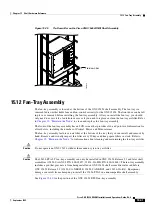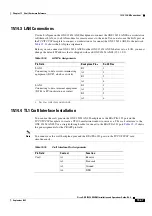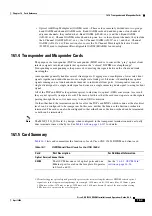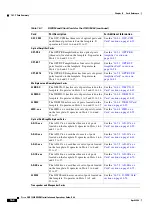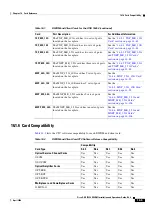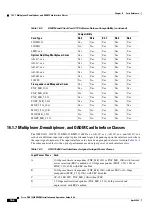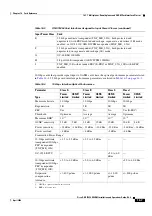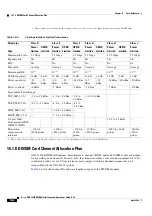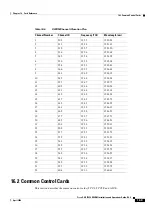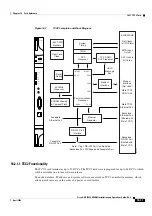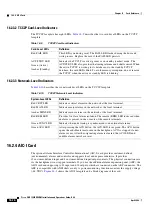
16-3
Cisco ONS 15454 DWDM Installation and Operations Guide, R6.0
April 2006
Chapter 16 Card Reference
16.1.4 Transponder and Muxponder Cards
•
Optical Add/Drop Multiplexer (OADM) cards—These cards are mainly divided into two groups:
band OADM and channel OADM cards. Band OADM cards add and drop one or four bands of
adjacent channels; they include the 4-Band OADM (AD-4B-xx.x) and the 1-Band OADM
(AD-1B-xx.x). Channel OADM cards add and drop one, two, or four adjacent channels; they include
the 4-Channel OADM (AD-4C-xx.x), the 2-Channel OADM (AD-2C-xx.x), and the 1-Channel
OADM (AD-1C-xx.x). This section also covers the 32-Channel Wavelength Selective Switch
(32WSS) used to implement Reconfigurable OADM (ROADM) functionality.
16.1.4 Transponder and Muxponder Cards
The purpose of a transponder (TXP) or muxponder (MXP) card is to convert the “gray” optical client
interface signals into trunk signals that operate in the “colored” DWDM wavelength range
1
.
Transponding or muxponding is the process of converting the signals between the client and trunk
wavelengths.
A muxponder generally handles several client signals. It aggregates, or multiplexes, lower rate client
signals together and sends them out over a higher rate trunk port. Likewise, it demultiplexes optical
signals coming in on a trunk and sends them out to individual client ports. A transponder converts a
single client signal to a single trunk signal and converts a single incoming trunk signal to a single client
signal.
All of the TXP and MXP cards perform optical to electrical to optical (OEO) conversion. As a result,
they are not optically transparent cards. The reason for this is that the cards must operate on the signals
passing through them, so it is necessary to do an OEO conversion.
On the other hand, the termination mode for all of the TXPs and MXPs, which is done at the electrical
level, can be configured to be transparent. In this case, neither the Line nor the Section overhead is
terminated. The cards can also be configured so that either Line or Section overhead can be terminated,
or both can be terminated.
Note
The MXP_2.5G_10G card, by design, when configured in the transparent termination mode, actually
does terminate some of the bytes. See
for details.
16.1.5 Card Summary
lists and summarizes the functions of each Cisco ONS 15454 DWDM and client card.
1. Client-facing gray optical signals generally operate at shorter wavelengths, whereas DWDM colored optical
signals are in the longer wavelength range (for example, 1490 nm = violet; 1510 nm = blue; 1530 nm = green;
1550 nm = yellow; 1570 nm = orange; 1590 nm = red; 1610 nm = brown). Some of the newer client-facing
SFPs, however, operate in the colored region.
Table 16-1
DWDM and Client Cards for the ONS 15454
Card
Port Description
For Additional Information
Optical Service Channel Cards
OSCM
The OSCM has one set of optical ports and one
Ethernet port located on the faceplate. It operates
in Slots 8 and 10.
See the
.
Summary of Contents for ONS 15454 DWDM
Page 38: ...Figures xxxviii Cisco ONS 15454 DWDM Installation and Operations Guide R6 0 August 2005 ...
Page 54: ...Procedures liv Cisco ONS 15454 DWDM Installation and Operations Guide R6 0 August 2005 ...
Page 64: ... 64 Cisco ONS 15454 DWDM Installation and Operations Guide R6 0 August 2005 Chapter ...



